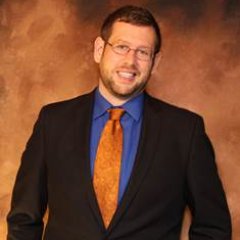
- This event has passed.
07/27/23: Andrew Ault [new date]

Please join us for a Virtual Great Lakes Seminar Series presentation:
Time: 11:00-12:00 pm EDT
Location: NOAA Great Lakes Environmental Research Laboratory, Lake Superior Hall and Virtual
Presenter: Andrew Ault – Associate Professor of Chemistry, University of Michigan
Title: Flying Slime: Lakes, Aerosols, and Harmful Algal Blooms
About the presentation: Aerosol production from wave breaking is one of the most abundant sources of aerosol globally, but emissions from freshwater lakes (lake spray aerosol, LSA) are poorly understood in comparison to sea spray aerosol (SSA). For calcareous lakes, such as the Laurentian Great Lakes, calcium carbonate is the abundant inorganic species, which can be aerosolized within LSA and undergo heterogeneous reactions similar to sodium chloride in SSA. In addition, harmful algal blooms (HABs) can lead to aerosolization of toxins like microcystins, which has the potential to lead to exposures to local populations. Given their small size and chemical complexity there is a significant analytical challenge when measuring these environmental contaminants. Herein, the chemical and physical properties of LSA from pristine freshwater and HABS are discussed., including measurements of particles along the coasts of the Great Lakes, inland, and aloft at cloud heights from flight measurements using a suite of microscopy, spectroscopy, and mass spectrometry measurements. As LSA can be generated and act as cloud condensation nuclei (CCN) or eject toxic materials from HABs, an improved understanding of LSA emission and physicochemical properties is needed to determine the impacts on meteorology, climate, and health in the Great Lakes and many other regions.
About the speaker: Andrew Ault received his B.A. from Carleton College where he first got involved with oceanic research during a SEA semester program measuring dissolved oxygen and chlorophyll on a sail bot traveling from Hawaii to Alaska. He received his Ph.D. in chemistry from the University of California San Diego where he studied individual particles emitted and transported in the atmosphere with real-time, single particle mass spectrometry under the guidance of Prof. Kim Prather (USCD/SIO). As a postdoc at the University of Iowa he worked with the Center for Aerosol Impacts on Chemistry of the Environment (CAICE) an NSF Center for Chemical Innovation focused on aerosol emission from marine source, blooms, and chemical reactions. In his independent career as a professor at Michigan starting in 2013, he has studied aerosol emissions from the Great Lakes and inland lakes and their reactions in the atmosphere. Recently, his group has focused on aerosolization from cyanobacterial harmful algal blooms (cHABs) and the potential for emissions of toxins. His group has identified significant concentrations of toxins in aerosols, different toxins and peptides.
**Registration is not required**
_____________________________________________________
IMPORTANT VISITOR INFORMATION
All seminar attendees are required to receive a visitor badge from the front desk at the NOAA Great Lakes Environmental Research Laboratory facility. Attendees need to present a valid U.S. photo ID or green card. If you are a Foreign National, advance notification of at least 48 hours is needed so that security guidelines are followed. You will need to present your passport (a copy will NOT work). For questions regarding building access, or assistance in obtaining Foreign National clearance, please please call 734-741-2024 or email [email protected]. Additional questions? Contact Mary Ogdahl: [email protected]; visit ciglr.seas.umich.edu for more information.


